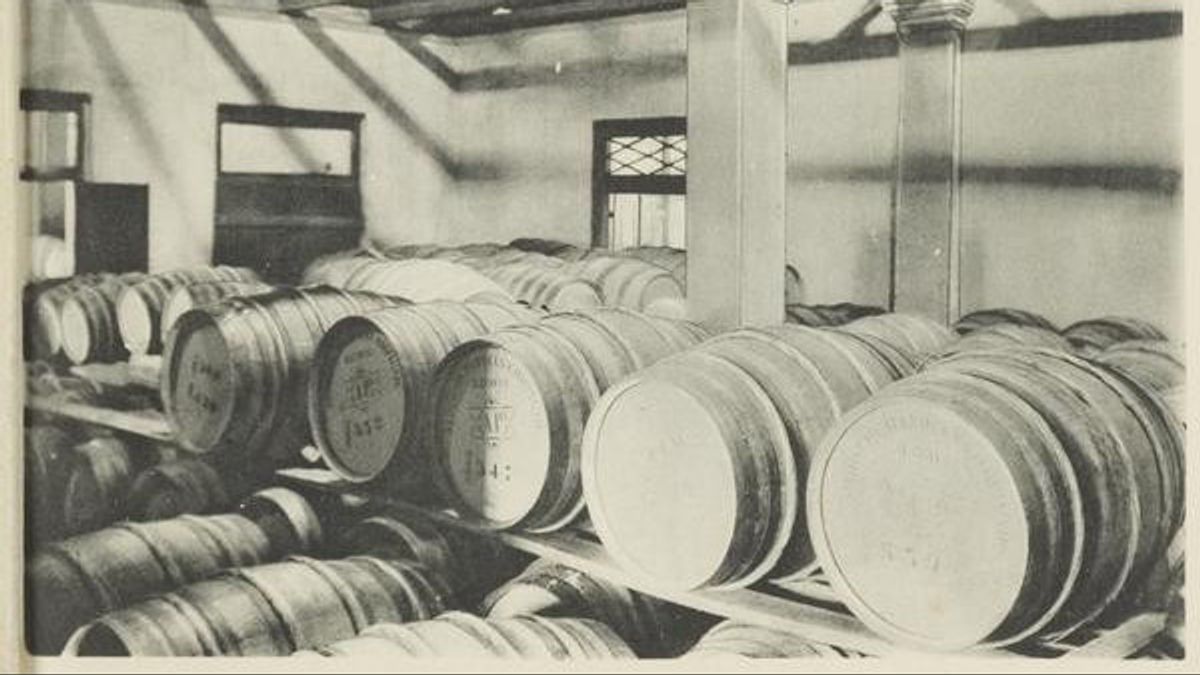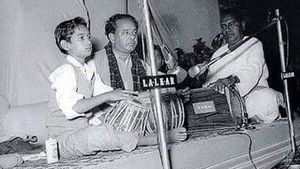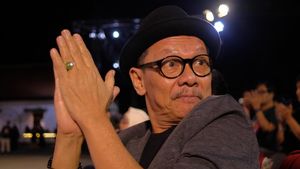JAKARTA - The existence of arak type liquor has a long history in Jakarta. During the colonial period the drink was called Batavia Arrack or Arrack van Batavia. Its distinctive taste makes Batavian wine famous all the way to mainland Europe. Even in the era of the Governor General of the Dutch East Indies, Jan Pieterszoon Coen, this wine was used to prevent tropical diseases.
The presence of arak in Batavia at that time was inseparable from the role of the Chinese, who had lived for a long time and were producers of arak. Even so, there are many versions of the origin of the wine itself.
Some say, the word arak is taken from Arabic, namely araq, which means "sweet liquor." As explained in the Lisanularabi Book, araq is defined as "something that comes out of the base of the hair or skin (sweat)." The meaning then develops into distillation or distillation.
Meanwhile, according to Asep Rahmat Hidayat's explanation, a language researcher in his writing in Tempo Magazine (2018) revealed, even though the word arak comes from Arabic, it is difficult to say that the Indonesian people accept the concoction from Arabic. Furthermore, Asep said that the word Harak (liquor) appeared to have appeared in the 90th stanza of the Kakawin Nagarakretagama written in 1365, and at that time Indian influence was dominant.
"According to one source, the arak distillation technology developed during the Delhi Sultanate, then spread to China and arrived in Java by the Mongols during the Yuan Dynasty. It is said that Korean liquor, soju, was originally also called arkhi," said Asep.

In addition, the existence of arak made by Batavia is widely recorded in reports of Dutch explorers' trips to Jakarta in the past. Arak even existed long before the Dutch came to power in the archipelago.
It was noted that the Dutch fleet under the leadership of Wybrand van Warwijck on their second voyage to the archipelago had stopped by Jaccatra (the initial name of Jakarta) on their way to Maluku. At Jaccatra they prepared and filled the ship with all kinds of supplies on November 16, 1599. While they were collecting drinking water, they also bought large quantities of rice wine from the Chinese.
It did not stop there, according to Asep Rahmat Hidayat, Admiral Cornelis Matelied de Jonge who was anchored in Jakarta in 1607, also gave testimony. "This king appears to be a capable man, asking curiously about various things in Holland. He himself made guns and large cannons. Ships got 17 legger (9,894 liters) arrack here," he wrote.
Subsequently, the Governor General of the Dutch VOC trading association, Gerard Rejnst (1614-1615) also signed a cooperation agreement between himself and Prince Jayakarta in 1614. In addition to giving the VOC the power to build a warehouse, Pangeran Jayakarta also promised to remove duties on arak.

Meanwhile, during the time of the Governor-General of the VOC, Jan Pieterszoon Coen, who served in 1619-1623 and 1627-1629, Batavian wine became increasingly popular among Europeans in Batavia. Even though he was known as a devout believer of Calvinism, Coen had called for his citizens to consume arak to avoid tropical diseases.
Coen suggested that residents drink a glass of wine on an empty stomach every time they start an activity. "Our nation must drink or die," said Coen in 1619.
In contrast to the current government, where alcohol is prohibited, during the Coen era, Dutch citizens in Batavia took preventative measures by regularly consuming locally produced coarse arak and cigars. Rules of use, a glass in the morning to open the day, and at night before bed.
Therefore, it is not surprising that the distillation of arak is one of Batavia's main industries. This product is even well known in Asia, because most of the arak is exported to Bengal (Bangladesh), Coromandel and Sri Lanka. Several other parts were shipped to Europe. A small portion was brought to Europe. At that time, arak was no longer made from cooked rice and mixed with tuak, but with mellase or sugar syrup.
Meanwhile, according to Windoro Ari in the book Batavia, 1740: Combing Betawi Footprints (2010), the number of arak distilleries in Batavia has even reached 20 factories. The highest production ever achieved for each factory was 100 drums per day in 1793.
Famous in EuropeIn Europe, Batavian arak is famous for arriving in Sweden via a long journey from the Gotheborg ship which stopped by Batavia in 1743. Many Scandinavian people liked the taste of Batavian arak which had citrus and chocolate aroma with an alcohol content of up to 5 percent.
"Our people embrace and bless themselves because they managed to arrive at such an extraordinary place with their punch," the story of a British captain, Woodes Rogers, in the early 18th century, quoted by Bernard HM Vlekke in the book Nusantara (2008).
In addition, Vlekke also recorded the testimony of Captain James Cook, a famous British explorer, who happened to have stopped in Batavia to repair his ship. Cook told of one of his crew members who never fell ill while living in Batavia, even though he was 70 years old.
Cook then revealed the secret of his subordinates because they didn't stop getting drunk. He acknowledged that alcohol's resistance to disease was proven.
"Another prevention is smoking. It was a golden age when a good Dutch cigar was sold for a thousand three-dollar sticks, and even a Havana one for only $ 10 per thousand. But the Batavian people preferred pipe cigarettes to cigars. They smoke pipes while attending funeral services and when riding horses in parades as the proud guards of the city of Batavia, and of course they smoke pipes while sitting at night in front of their respective houses enjoying the 'fresh' air from the canal, "concluded Bernard.
The English, Chinese, Japanese, Arabic, and French versions are automatically generated by the AI. So there may still be inaccuracies in translating, please always see Indonesian as our main language. (system supported by DigitalSiber.id)













